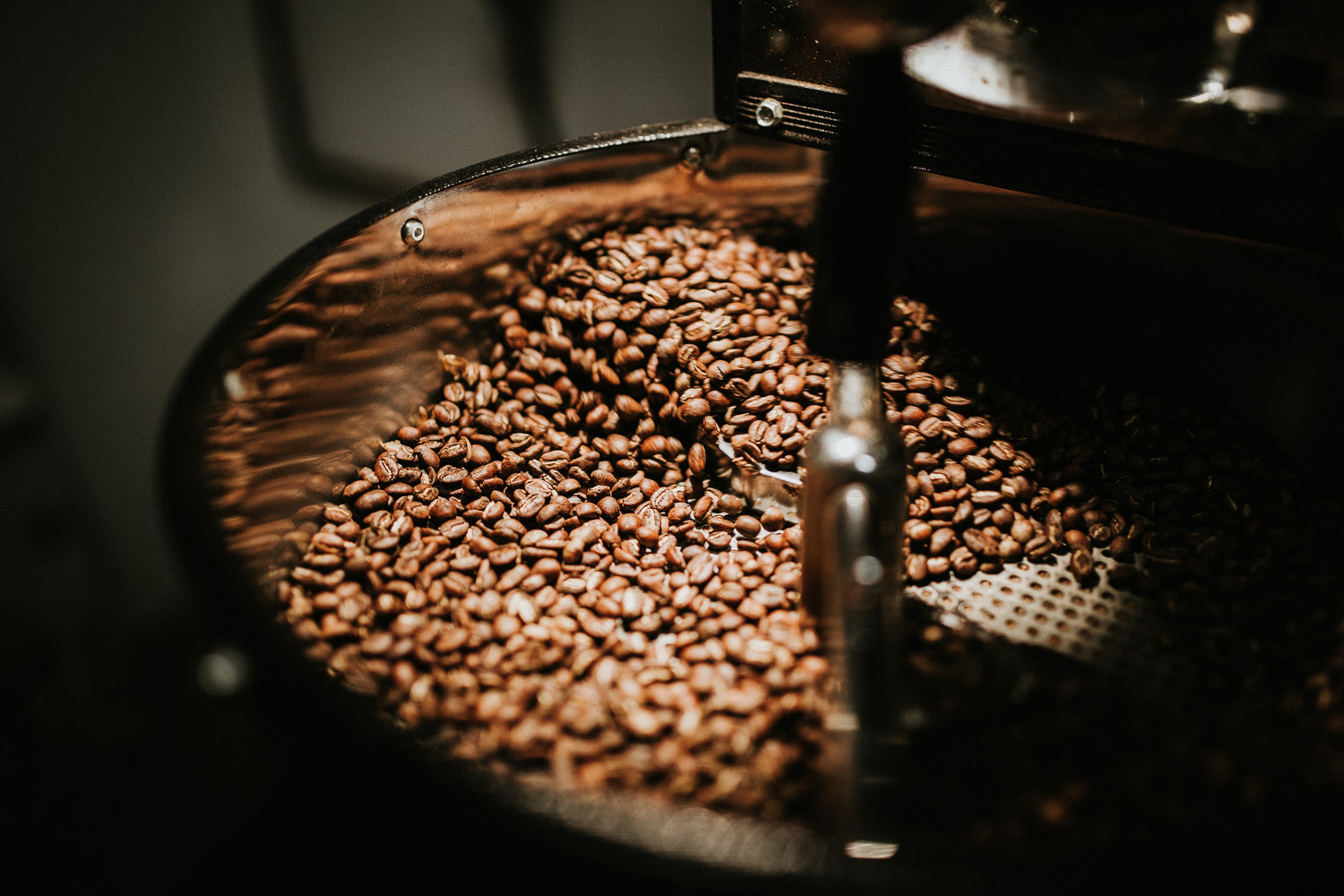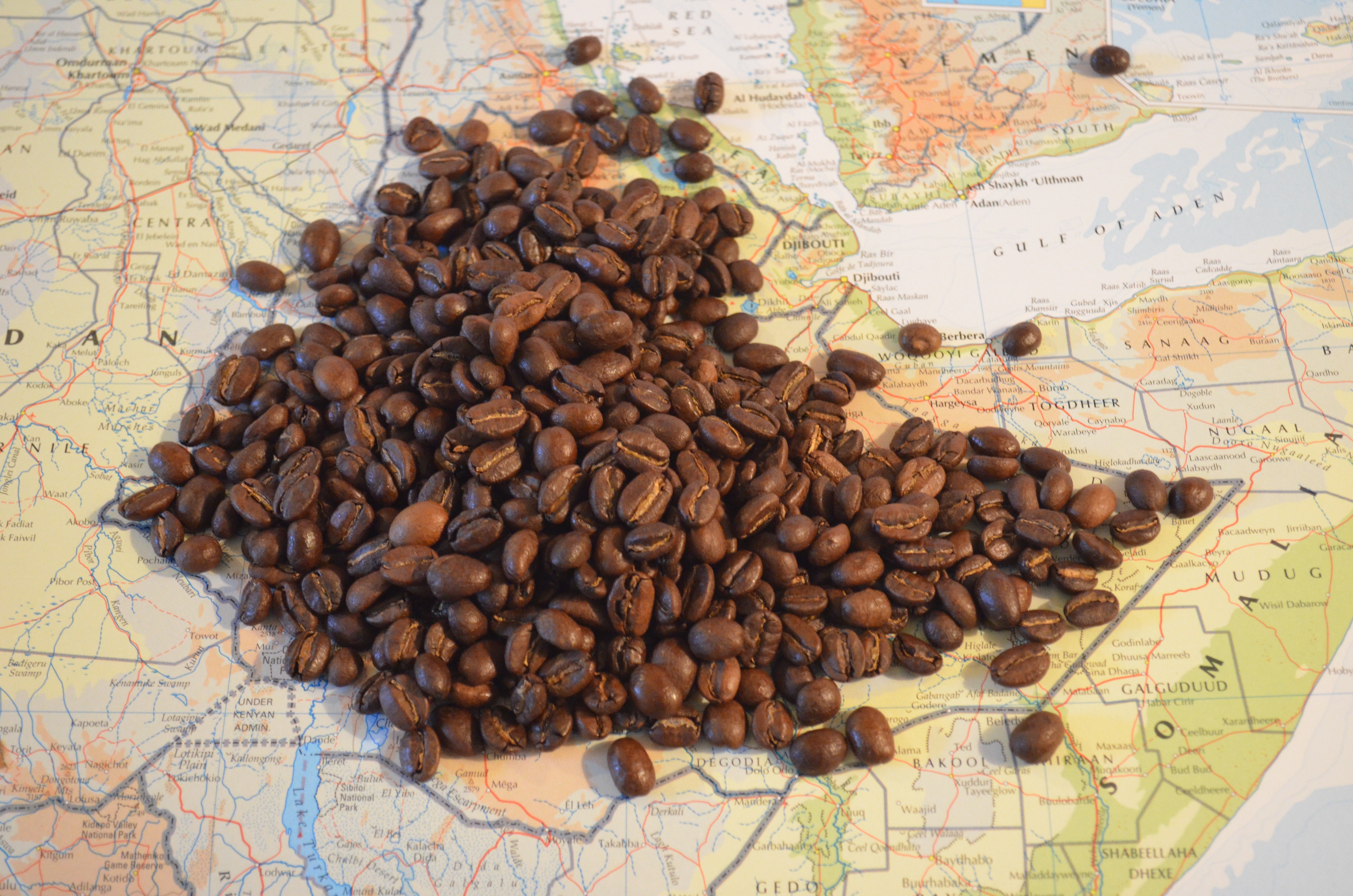Contrarians rejoice: roasting does not affect a coffee’s caffeine content in any significant and predictable manner.
Let’s dig deeper to understand why. Generally speaking, all coffee is caffeinated. Caffeine occurs naturally in about 60 known species of plants, acting as a defense against insects and other pests. Caffeine is also believed to assist coffee seeds in germination and perhaps even to encourage and reward its pollinators.
Different species of coffee exist, and certain species are recognized to have a naturally higher or lower average caffeine content. The widely cultivated Coffea arabica and Coffea canephora (robusta) are the best known species. Arabica, comprising almost all specialty coffee, contains in its seeds (commonly recognized as coffee beans) about 0.5-1.5% caffeine. The seeds of the hardier and usually lower quality robusta typically contain 2-3% caffeine. Coffee brands advertising a higher caffeine content often achieve this by using some percentage of robusta coffee in their blends.
Some varieties of coffee are naturally low in caffeine, such as the Laurina variety of Arabica. However, none of these naturally low caffeine varieties are widely available due to low yields and high costs. Decaf coffee is decaffeinated post-harvest, typically far away from the farms where those coffees were grown. These processes, like the Swiss Water Process and the Royal Water Process, reduce the caffeine content by 99.9%.
On to roasting. When we roast coffee, we’re subjecting unroasted coffee seeds (or “greens”) to a hot environment for about 12-15 minutes. In that time the temperature of the coffee will gradually rise. Depending on the coffee, we’ll choose to end the roasting process at a very predictable time and temperature. For many roasting companies, that range might be anywhere from 400° to 430°F. The absolute extreme end temperature is somewhere in the neighborhood of 475°F, at which point coffee is nearing total carbonization. Even the darkest supermarket coffees spend very little time approaching this temperature.
Caffeine does not undergo significant thermal decomposition before it begins to melt at about 460°F, which means it remains unaffected by typical roasting temperatures. Very few coffees ever see temperatures hot enough to begin affecting caffeine in a significant manner and even those that do can afford to spend very little time in that range. It’s reasonable to assume that most coffees never will.
If that seems uncomplicated, the roasting process does affect other physical properties of coffee including its density. As a coffee roasts, it loses moisture and weight predictably. Meanwhile, the seeds expand in size. If a coffee roasts longer and to higher temperatures, as is generally the case with coffees advertised as dark roasts, these changes are more pronounced.
So a coffee’s caffeine content is not affected by roasting but its size and weight are. Unfortunately, this opens a door for measurement inconsistencies in brewing. Without discerning between volume and weight, the question of caffeine content becomes a sort of Schrödinger’s Cat, where a darker roast could mean less caffeine per scoop but more caffeine per unit of weight in comparison with a lighter roast.
(Why is this the case? Remember that a typical coffee seed contains something in the ballpark of 1% caffeine. Let’s assume for the sake of easy math that a single, enormous coffee seed weighs one gram and therefore contains maybe 10mg of caffeine. Let’s roast that coffee. We can expect it to expand in size and to lose perhaps 15% of its original weight. Now our enormous roasted coffee seed is larger, but only weighs 0.85g. But, because all of its caffeine survived the roasting process intact, our larger but slightly less heavy coffee seed still contains its original 10mg of caffeine.)
But all of this is even further complicated by other factors including significant agricultural variability and the precise size and recipe of a drink order. Caffeine is highly soluble in water, so it’s safe to assume that however your coffee is prepared, all available caffeine makes its way into the cup.
It’s reasonable to say that you simply can’t predict a coffee’s caffeine content using any practical rules of thumb. For those acutely sensitive to caffeine, this justifies paying attention to decaf options, which can be wonderfully sweet and rounded. For the rest, drink whatever tastes amazing. (It’s caffeinated.)







Leave a comment
This site is protected by hCaptcha and the hCaptcha Privacy Policy and Terms of Service apply.